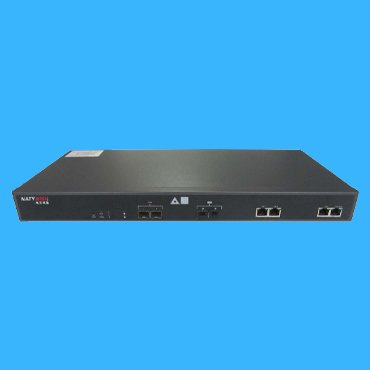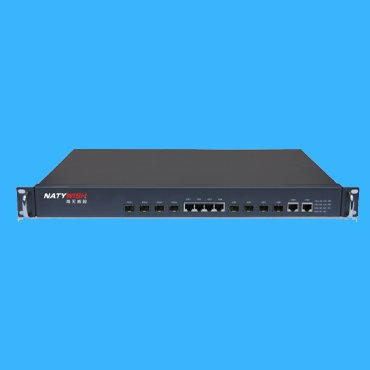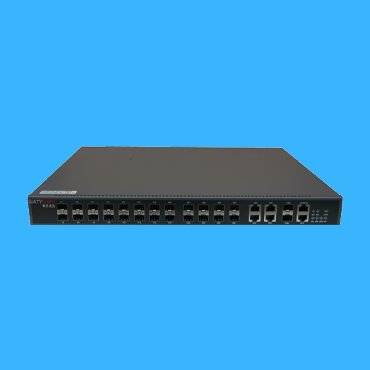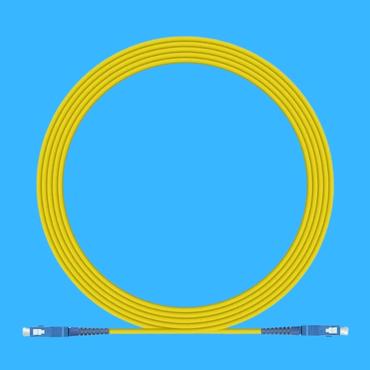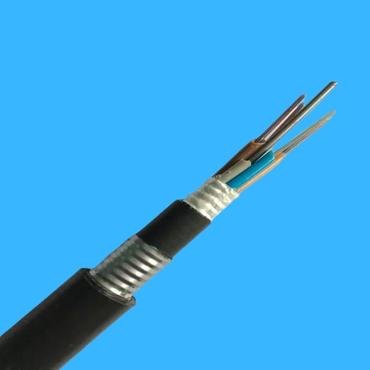Your Best EPON OLT Supplier in China
What is an EPON OLT
In an EPON network, OLT is not only a switch or router, but also a multi-service providing platform. It provides optical fiber interface for passive optical fiber network. According to the trend of Ethernet to MAN and WAN, OLT will provide 1 Gb/s and 10 Gb/s Ethernet interfaces. In addition to supporting traditional voice, ordinary telephone lines and other types of T1/E1 interfaces, OLT also supports SONET connections at ATM, FR and OC3/12/48/192 rates. The OLT in EPON can be configured with multiple optical line cards to connect with 16-64 ONUs as required. In EPON network, the maximum distance from OLT to ONU can reach 20 km. If an optical fiber amplifier (active repeater) is used, the distance can also be extended into a much longer distance.
We can offer you an EPON OLT equipment for your different applications, additionally, we can also provide you technical consulting and a package supply of indoor fiber cable, PLC splitter, patch cord cable and CAT5e or CAT6 UTP cables for buidling up your EPON network at lowest possible costs.
EPON OLT in different ports
6 GE interfaces (2 gigabit optical ports, 2 Combo ports, 2 gigabit electrical ports); 2 fixed EPON interfaces
PON interface uplink and downlink symmetric 1Gbps transmission rate
Average luminous power of PON port:+2dbm~+7dbm
PON port receiving light sensitivity: not less than – 30dBm
Security: ONU authentication mechanism
Network coverage radius: 30 km
Standard reference IEEE802.3ah
12 GE interfaces (8 gigabit RJ45 ports, 2 Combo ports, 4 10G optical ports)
4 fixed EPON interfaces
PON interface uplink and downlink symmetric 1Gbps transmission rate
Average luminous power of PON port:+2dbm~+7dbm
PON port receiving light sensitivity: not less than – 30dBm
Security: ONU authentication mechanism
Network coverage radius: up to 60 kilometers
Switching capacity 108Gbps
Packet forwarding rate (IPv4/IPv6) 80Mpps
Service port 8 * PON interface, 8 * 10/100/1000 Base-T interface, 4 * 10000Base-SR/LR/ER interface
Redundant design with dual power supply can support dual AC input, dual DC input and AC+DC input
Power AC: input 90~240V 47/63Hz;
DC: input – 36V ~ – 72V;
Full load power consumption ≤ 56W
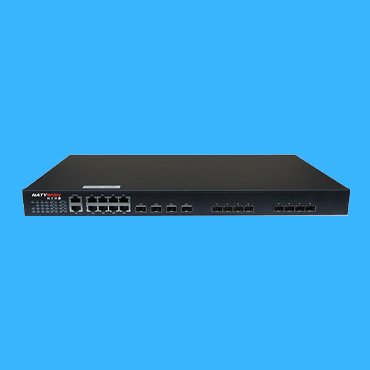
System capacity up to 1:64 spectral ratio
Backplane bandwidth 128G
MAC table capacity: 32K
PON interface PON 16 EPON interfaces
8 GE interfaces (4 gigabit optical ports, 4 gigabit optical multiplexing ports)
Scalable 2-way 10-Gigabit interface
PON interface characteristics: uplink and downlink symmetric 1Gbps transmission rate PON interface average luminous power:+2dbm~+7dbm
PON port receiving light sensitivity: not less than – 30dBm
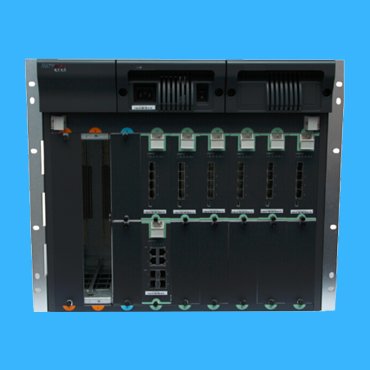
Backplane bandwidth>6.4Tbps
Switching capacity 3.2Tbps
Packet forwarding rate (IPv4/IPv6) 2860Mpps
Total number of slots 18
Number of service slots: 16
Service ports can support up to up to 256 EPON ports and 32 GE ports
Up to 32 10GEPON ports and 32 10GE ports can be supported simultaneously up to 64 10GEPON ports and 64 10GE ports
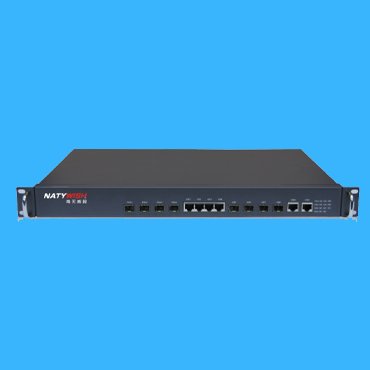
12 GE interfaces (8 gigabit RJ45 ports, 2 Combo ports, 4 10G optical ports)
4 fixed EPON interfaces
PON interface uplink and downlink symmetric 1Gbps transmission rate
Average luminous power of PON port:+2dbm~+7dbm
PON port receiving light sensitivity: not less than – 30dBm
Security: ONU authentication mechanism
Network coverage radius: up to 60 kilometers
Product Feature Box
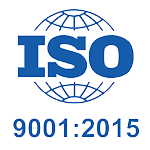
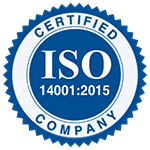


EPON Solution for Hotels
The entire system can connect guest rooms, offices, security rooms, and other network equipment such as various models of computers, switches, IP cameras, and wireless APs. Support multiple networking methods. Support the implementation of extended functions such as IP telephony and WIFI.


EPON Solution for School Campus
Using EPON technology, we have constructed a campus network backbone to achieve connectivity between various office areas, teaching buildings, and dormitory buildings, as well as fast Ethernet access, improving transmission efficiency, and effectively ensuring the development of remote multimedia teaching, digital library, and other services.
EPON Solution for Buildings
Advantages of EPON tech in building access: 1. It can reduce the occupation of backbone optical fiber resources and save investment. 2. Simple network structure, flexible networking, and strong scalability. 3. The entire system has high stability and scalability EPON system can provide QoS guarantee for each business of each user.

Related Product
EPON, Ethernet Passive Optical Network ; OLT, Optical Line Terminal
The concept of passive optical network (PON) has a long history. It has the characteristics of saving optical fiber resources and being transparent to network protocols, and plays an increasingly important role in optical access networks. At the same time, after 20 years of development, Ethernet technology has almost completely dominated local area networks (LANs) with its simple, practical, and inexpensive characteristics, and has proven to be the best carrier for carrying IP packets. As the proportion of IP services in metropolitan and trunk transmission continues to rise, Ethernet is also gradually penetrating into access, metropolitan and even backbone networks through improvements in transmission rate and manageability. The combination of Ethernet and PON produces Ethernet Passive Optical Network (EPON). It has the advantages of both Ethernet and PON, and is becoming a popular technology in the field of optical access networks.
There are only optical passive devices such as optical fibers and optical splitters between the office terminal (OLT) and the user (ONU), which eliminates the need to rent a computer room, provide power supplies, and maintain active equipment. Therefore, construction and operation maintenance costs can be effectively saved;
EPON adopts the transmission format of Ethernet, which is also the mainstream technology of user LAN/local area network. The two technologies have a natural convergence, eliminating the cost factors caused by complex transmission protocol conversion;
Using single fiber wavelength division multiplexing technology (downstream 1490nm, upstream 1310nm), only one backbone fiber and one OLT are required, and the transmission distance can reach 20km. On the ONU side, optical splitters are used to distribute to up to 32 users, thereby greatly reducing the cost pressure on OLT and backbone optical fibers;
Both the uplink and downlink are at gigabit rates. The downlink uses encrypted broadcast transmission for different users to share bandwidth, while the uplink uses Time Division Multiplexing (TDMA) to share bandwidth. High speed broadband can fully meet the bandwidth requirements of access network customers, and can conveniently and flexibly dynamically allocate bandwidth according to changes in user needs;
With a point to multipoint structure, it is easy to expand and upgrade the system by increasing the number of ONUs and a small amount of user side optical fibers, fully protecting the investment of operators;
EPON has the ability to simultaneously transmit TDM, IP data, and video broadcasts. TDM and IP data are transmitted using the IEEE 802.3 Ethernet format, supplemented by a carrier level network management system, which is sufficient to ensure transmission quality. Video service broadcast transmission can be achieved by extending the third wavelength (typically 1550 nm).
EPON can currently provide up and down symmetric 100Gb/s bandwidth, and can be upgraded to 800Gb/s with the development of Ethernet technology
A typical Ethernet over PON system consists of OLT, ONU, and POS.
The OLT (Optical Line Terminal) is placed in the central computer room, and the ONU (Optical Network Unit) is placed near or integrated with the network interface unit. POS (Passive Optical Splitter) is a passive optical fiber splitter that connects OLTs and ONUs. Its function is to distribute downstream data and centralize upstream data. OLT is not only a switch or router, but also a multi service delivery platform that provides fiber optic interfaces for passive fiber optic networks. According to the trend of Ethernet towards metropolitan and wide area development, OLT will provide multiple Gbit/s and 10Gbit/s Ethernet interfaces to support WDM transmission. OLT also supports SONET connections at rates such as ATM, FR, and OC3/12/48/192. If you need to support traditional TDM voice,ordinary telephone lines (POTS) and other types of TDM communications (T1/E1) can be multiplexed and connected to the attached interface. In addition to providing network centralization and access functions, OLT can also address different QoS/SLA requirements of users requiring bandwidth allocation, network security, and management configuration.

